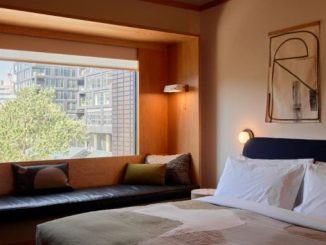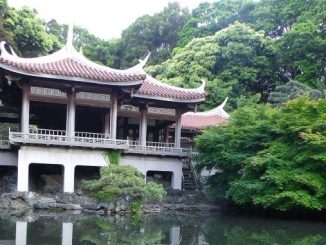While it’s perhaps not quite fair to call Costa Rica an underrated travel destination – Global Affairs Canada ranked it a top tourism hot spot for Canadians in 2023-24 – it’s probably fair to say its profile is a bit lower than the more typical Latin American destinations – Mexico, Cuba, and the like.
But to discount the “Rich Coast” would be a big mistake. This extraordinary country, which borders both the Pacific and Caribbean coast, and which boasts an incredible range of wildlife and is among the most biodiverse countries in the world, has instantly risen to the top of our “must-visit” destinations following our recent experiences there.
First up on our aventuras en Costa Rica: the incredible coastal town of Uvita, on the Pacific Coast.

Getting to Uvita from the main San José Airport is easy enough – provided you’re comfortable driving, and/or are okay with hiring a private car or even booking a seat on a shared bus. Indeed, we were pleasantly surprised by the quality of Costa Rica’s roads, its reputation for shoddy road conditions largely an artefact of the past – though you should be prepared for some tougher weather conditions if you visit during the rainy season (approximately May-November).
Still, it’s clear the Costa Rican government has put a great deal of thought – and money – into improving road conditions in this tourism-heavy country, where tourism accounts for approximately 8-9% of its GDP. The drive itself is beautiful, taking you zooming past coffee and banana plantations, through lush forests, and all along the Pacific Coast. Wherever it is you’re heading in Costa Rica, you can expect to drive through equally impressive vistas, north to south, Caribbean to Pacific.
Uvita itself is famous for two things: incredible views and whales.
Lots and lots of whales.
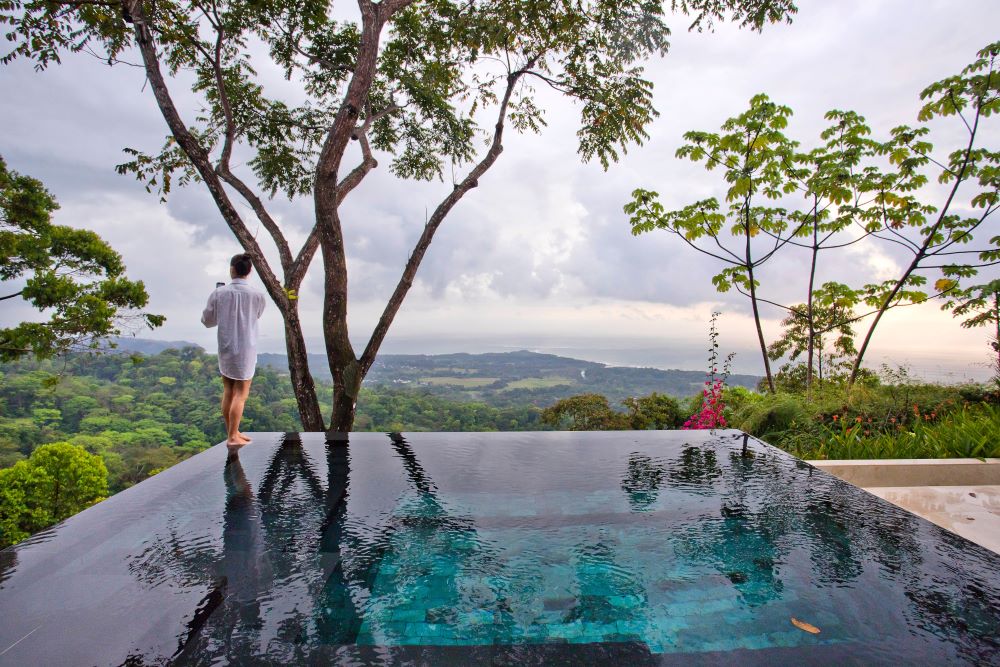
Our stay at the Kura Boutique Hotel gave us the opportunity to see both.
The Kura Boutique Hotel (stylized Kurà), founded by architect Martin Wells and his partner, biologist Alejandra Umaña, is a world-class ecotourism destination, nestled in the hills of Uvita and overlooking its famous “whale tail” beach, which stretches out from the Marino Ballena National Park into the Pacific Ocean.
The concept of Kurà, “Tropical Minimalism”, is predicated on the notion that luxury does not have to equate wastefulness. All food is obtained locally or even grown on-site (we even caught a glimpse of the garden from which the kitchen harvests many of their ingredients), and the eco-brutalist architecture combines bold angular design with recessive features which blend into the landscape. The water is heated naturally, and, an interesting touch, the access road for Kurà is deliberately off-the-beaten path, signalled only be subtle logos placed alongside the road, discouraging wasteful/noisy through traffic and demonstrating a path to “exclusivity” which only relies on the natural environment.
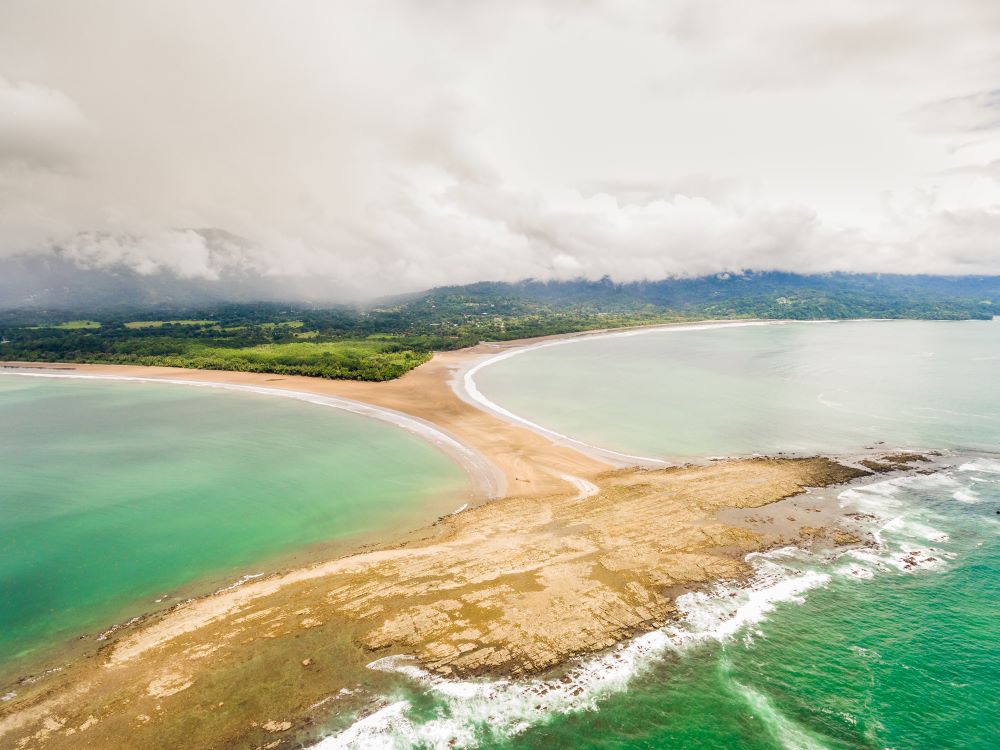
It’s hard to say what was the best part about Kurà, the gorgeous rooms with private infinity plunge pools; the abundance of wildlife, including plenty of comfortably just-out-of-reach toucans perched in nearby trees; the fantastic (and highly accommodating) restaurant. Quiet, exclusive – only eight rooms total across this boutique hotel – there’s nothing quite like sitting at the outdoor restaurant, enjoying an aperitivo and watching the sun go down to a chorus of toucans.
Dinner at the semi-covered restaurant (there’s a sliding door which can be pulled closed during colder/rainy nights) brought with it the guarantee of lovely meal, local cocktails, and almost certainly some wildlife-spotting with visiting “locals” like katydids, lizards, and various exotic birds. And while we weren’t able to take in everything, it was nice that Kurà offered up a plethora of on- and off-site activities, including a beautiful massage room/spa, guided tours both day and night, and cooking classes where you get to prepare your own dinner using the same ingredients cultivated by the kitchen team. From our experience, and judging by the generous size of the portions you can make yourselves, the value proposition for the cooking lesson is more than worth it.
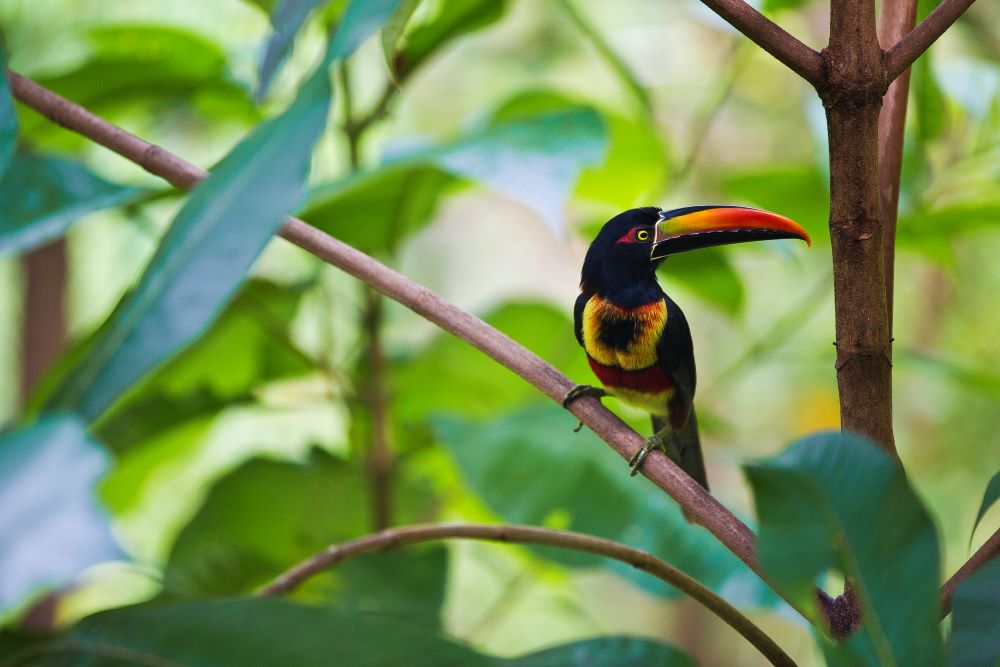
Beyond the lap of luxury (aka the hotel), Uvita is a great launchpoint for eco-tourism in the region. (Incidentally, guest services at Kurà are happy to coordinate private tours/excursions, and can also be counted on to arrange travel to and from airports/other regions of the country.)
The Marino Ballena National Park, home to the aforementioned whale tail beach, is a great place for whalewatching and snorkelling tours – if you get lucky, you might even accidentally combine both in a day! The waters are overflowing with dolphins, whales (the whalewatching season runs roughly July to October), sharks, manta rays, and those lovably goofy-looking parrotfish.
On land, Uvita and the surrounding region is home to several monkey species (the capuchin being the most common), the boar-like collared peccary, various snakes, glistening tree frogs (pro tip: book a night tour), crabs, iguanas, and so many insects – the beautiful, bright-blue morpho butterfly a highlight.
In the air – another pro tip: bring binoculars – you’re likely to spot various species of toucan, including the brightly-coloured aracari, the broad-winged hawk, scarlet macaws, and several species of woodpecker. Costa Rica is, honestly, a haven for birders, and if you weren’t trained on how to snap great shots through the lens of binoculars or telescope, odds are you’ll be a pro by the end of your stay.
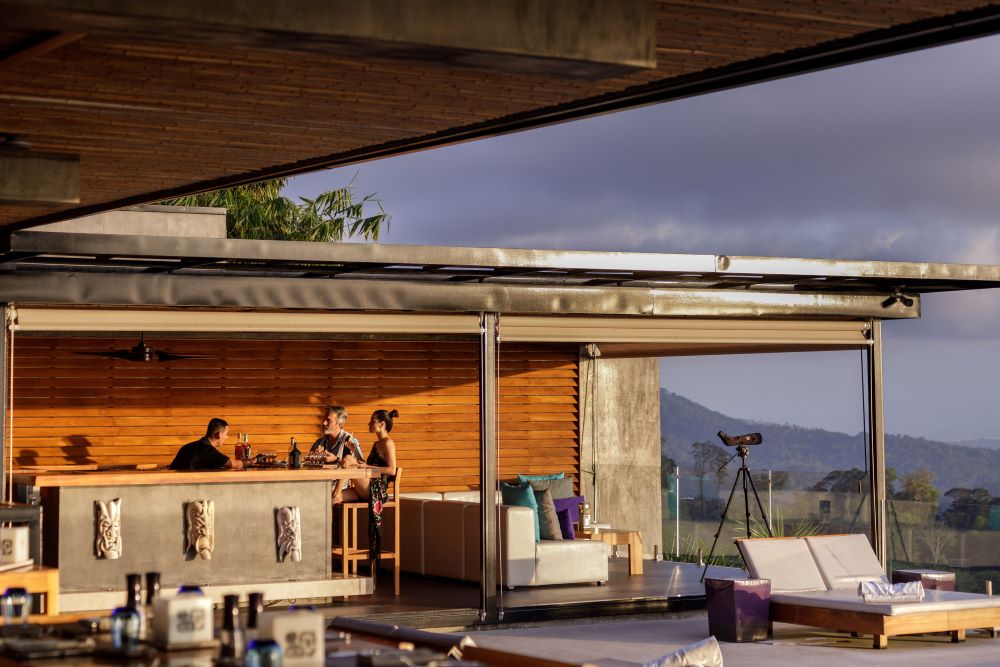
Our stay in Uvita concluded, as it must, with a lovely farewell dinner at the Kurà restaurant, contemplating sunset alongside the handful of other guests – the entire boutique hotel only holds eight suites – and enjoying “today’s catch”, a permanent menu item reflecting a commitment to only eating local, sustainably-caught fish. (In other words, don’t come to Kurà if you demand a specific type of fish on your plate every night; you’re always at the whim of what’s been caught that day.)
As the bats swooped in, and the katydids – whose beautiful Spanish name, esperanza, means “hope” – scuttled out of the way, we prepared to say our goodbyes.
Next up on our journey (pt. 2 to come): the wonders of Manuel Antonio National Park, the most popular park in all Costa Rica. Just watch out for the snakes!
***
In the meantime, check out National Geographic’s wonderful “Living Edens: Costa Rica” mini-documentary, and learn more about the Kurà Boutique Hotel here.

